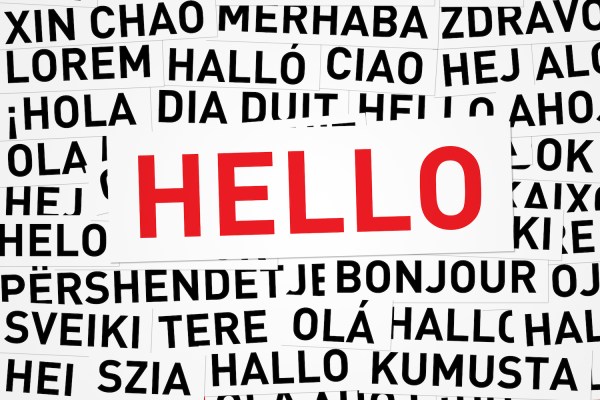
Smart global companies — and companies with global aspirations — are taking action to eliminate a major blind spot

Your expanding global business is leaving money on the table if its systems aren’t compatible with web addresses that have extensions such as .世界 or .ОНЛАЙН (.world and .online in Chinese and Russian, respectively). This missed opportunity has been growing for some time; a 2017 study concluded that an ecommerce market worth nearly $10 billion dollars annually is up for grabs — and that is a conservative estimate.
To understand why, consider these two facts:
First, the version of the Latin alphabet you are reading now is used by just more than a third of the world population. That number is dwarfed by the billions of people who read and write every day in Chinese, Arabic, Cyrillic, Devanagari or other scripts. These are being used in regions where population growth, economic growth and internet adoption all outpace global averages.
Second, recent innovations in how we navigate the internet have made domain names in diverse alphabets available to the majority of the world who use them. In 2012, there were only 22 so-called generic domain names (with familiar extensions like .com or .edu). That number now stands at more than 1,500.
Such innovation effectively brings an end to the era in which, say, a Japanese web surfer needs to toggle their keyboard to type a “www” or “.com,” because the entire domain name can now be written in Japanese.
This change is a big deal across rapidly growing markets worldwide, but particularly in Asia, where multilingualism is not widespread and new users on smartphones are key drivers of digital and economic growth. Even today, only a tiny percentage of all web addresses are expressed in Chinese characters, though Mandarin Chinese speakers make up nearly one-fifth of the world’s internet user population.
Even more relevant for the next wave of online consumers is that along with new domain names come email addresses in different scripts. A growing online population is using these addresses to sign up for services or sign into platforms.
This is why smart, global companies — and companies with global aspirations — are taking action to eliminate a major blind spot. Many software developers and corporate leaders reside in the English speaking or “Latin alphabet” parts of the world and the internet works pretty smoothly for them; therefore, they have not taken the important step of upgrading their software applications to accept all domain names equally. This step is a best practice referred to as “Universal Acceptance” of domain names and email addresses.
When systems are not Universal Acceptance ready, people using domain names or email addresses in different scripts cannot successfully use these systems, because the domain names and email addresses are not recognized as “valid.” This means lost business opportunities. Code libraries already exist in programming languages like Java and Python, often making this task the equivalent of a “bug fix;” however, it is a fix with huge implications.
To get a sense of the importance of Universal Acceptance, consider India. It has one of the fastest growing internet user populations on the planet and provides an illuminating case study.
As fast as internet adoption may be in India, in rural India it is faster still. The internet user base in India recently exceeded 500 million and is likely to reach 627 million by 2020. Two-fifths of users are located in rural areas. Consider also that India has 22 official languages and most users are on mobile devices.
In the Indian state of Rajasthan, the state government recently offered each of its 69 million residents free email addresses in both Hindi and English, while directing online public services to be Universal Acceptance ready (i.e. 100% available in Hindi). This required an intensive, 30-day push by developers to be compliant, and now residents can use their same Hindi email addresses to access an array of online platforms and services. Are some of these residents of Rajastan your future customers?
Microsoft is among the companies in the forefront of such compatibility. Last year it announced Email Address Internationalization (EAI) across most of its email platforms in an impressive 15 languages spoken across India. As Meetul Patel, COO of Microsoft India said:
“Ensuring that language is not a barrier to the adoption of technology is key for digital inclusion and growth. Making email addresses available in 15 languages is an exciting step to making modern communications and collaboration tools more accessible and easier to use for all – something we have been relentlessly working towards. We’re making technology use the language of people, and not requiring people to first learn the traditional language of technology.”
Despite such advantages, there is still a lot of work ahead. A recent review of the top 1,000 websites around the world found that only about five percent accepted all of the email address variations now in use.
Bringing systems up to date with Universal Acceptance is an easy way to make the internet more accessible for the billions of people whose languages are written in different scripts, making it a treasured cause of digital inclusion advocates. However, for any business seeking new global markets, it is a key competitive differentiator in an era of global online platforms, from direct e-commerce to the sharing economy. This is one first-mover advantage that may be worth billions.

